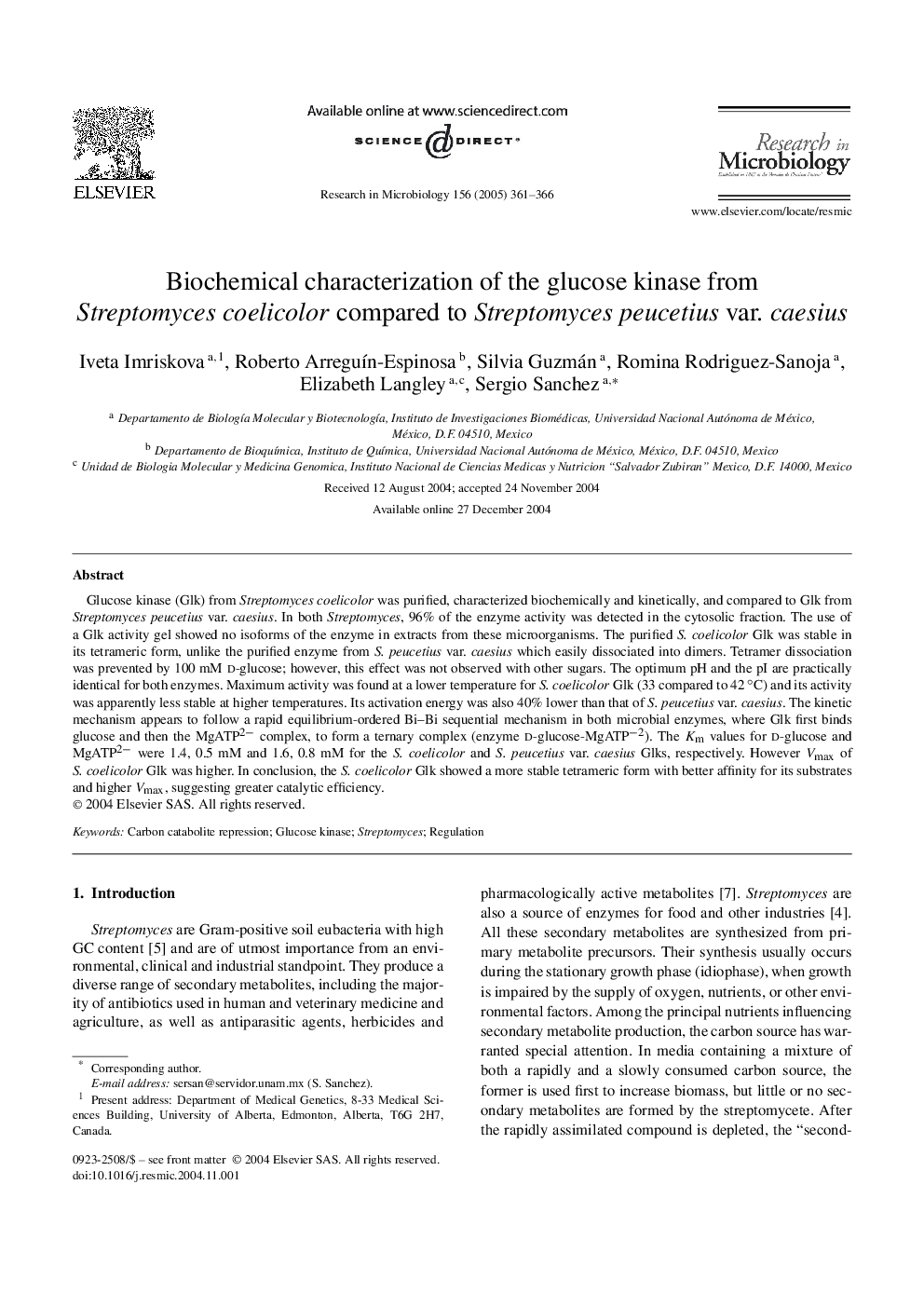| Article ID | Journal | Published Year | Pages | File Type |
|---|---|---|---|---|
| 9439863 | Research in Microbiology | 2005 | 6 Pages |
Abstract
Glucose kinase (Glk) from Streptomyces coelicolor was purified, characterized biochemically and kinetically, and compared to Glk from Streptomyces peucetius var. caesius. In both Streptomyces, 96% of the enzyme activity was detected in the cytosolic fraction. The use of a Glk activity gel showed no isoforms of the enzyme in extracts from these microorganisms. The purified S. coelicolor Glk was stable in its tetrameric form, unlike the purified enzyme from S. peucetius var. caesius which easily dissociated into dimers. Tetramer dissociation was prevented by 100 mM d-glucose; however, this effect was not observed with other sugars. The optimum pH and the pI are practically identical for both enzymes. Maximum activity was found at a lower temperature for S. coelicolor Glk (33 compared to 42â°C) and its activity was apparently less stable at higher temperatures. Its activation energy was also 40% lower than that of S. peucetius var. caesius. The kinetic mechanism appears to follow a rapid equilibrium-ordered Bi-Bi sequential mechanism in both microbial enzymes, where Glk first binds glucose and then the MgATP2â complex, to form a ternary complex (enzyme d-glucose-MgATPâ2). The Km values for d-glucose and MgATP2â were 1.4, 0.5 mM and 1.6, 0.8 mM for the S. coelicolor and S. peucetius var. caesius Glks, respectively. However Vmax of S. coelicolor Glk was higher. In conclusion, the S. coelicolor Glk showed a more stable tetrameric form with better affinity for its substrates and higher Vmax, suggesting greater catalytic efficiency.
Related Topics
Life Sciences
Immunology and Microbiology
Applied Microbiology and Biotechnology
Authors
Iveta Imriskova, Roberto ArreguÃn-Espinosa, Silvia Guzmán, Romina Rodriguez-Sanoja, Elizabeth Langley, Sergio Sanchez,
